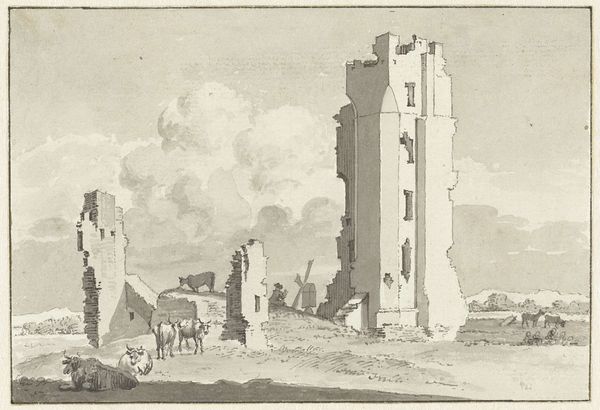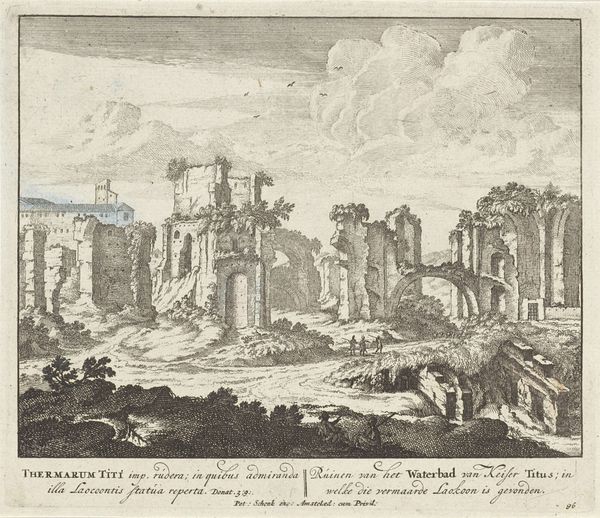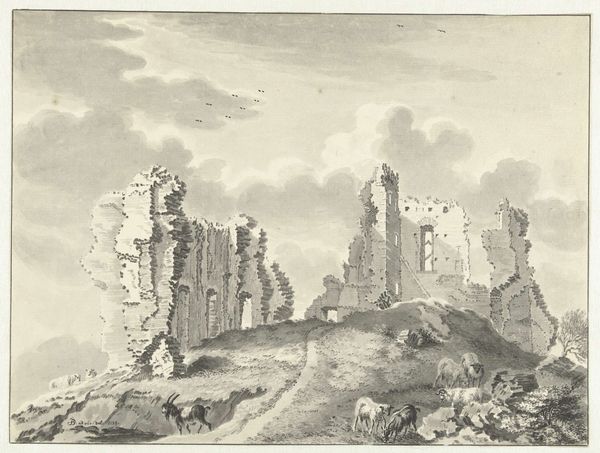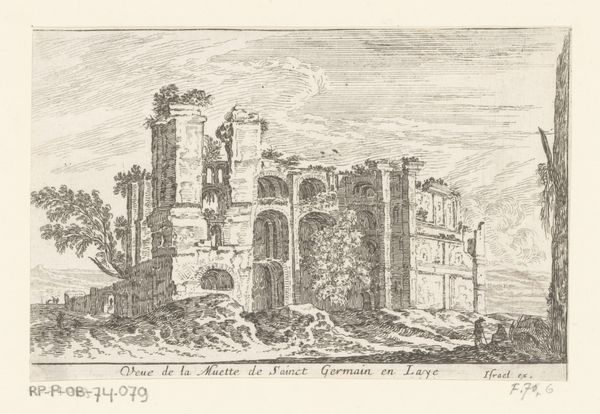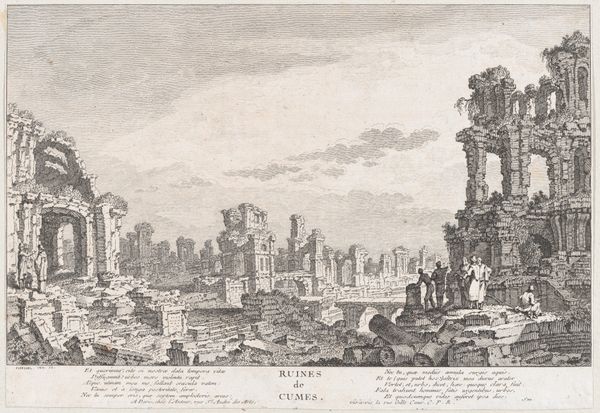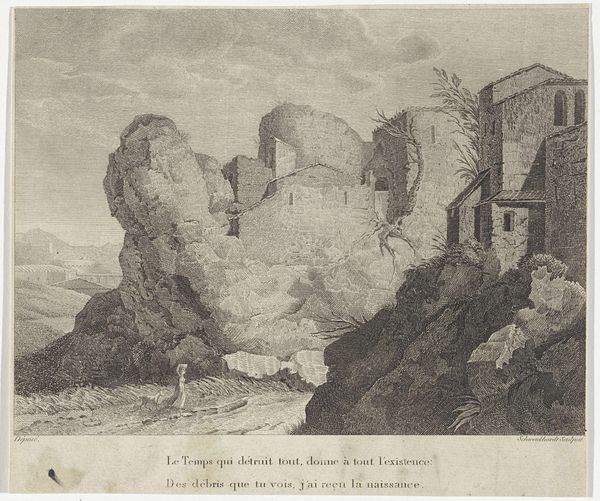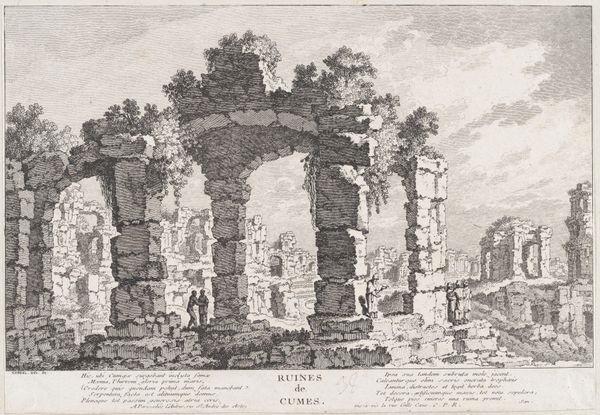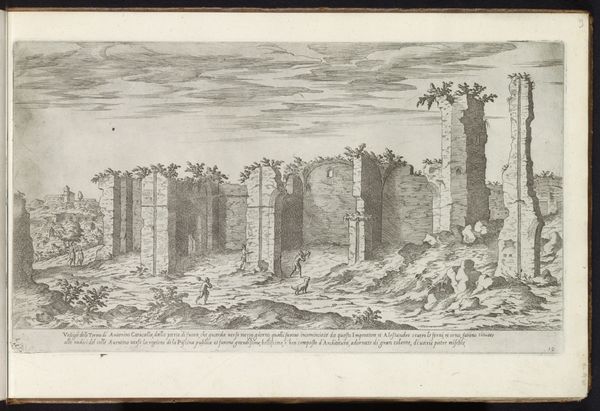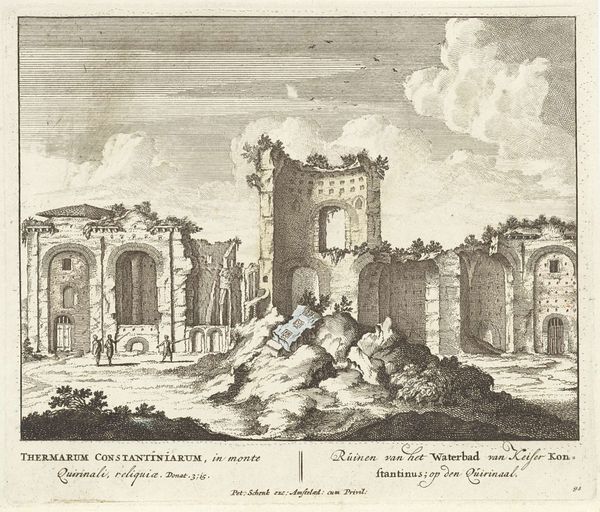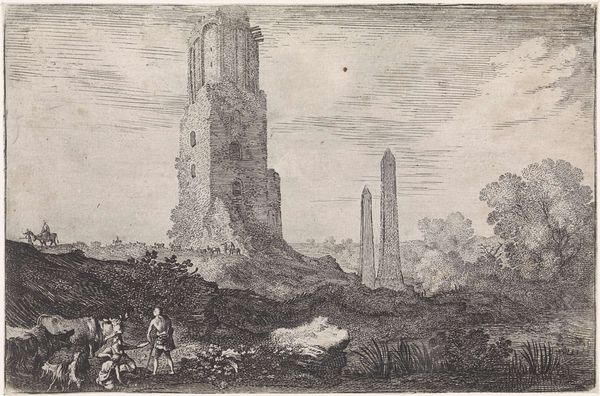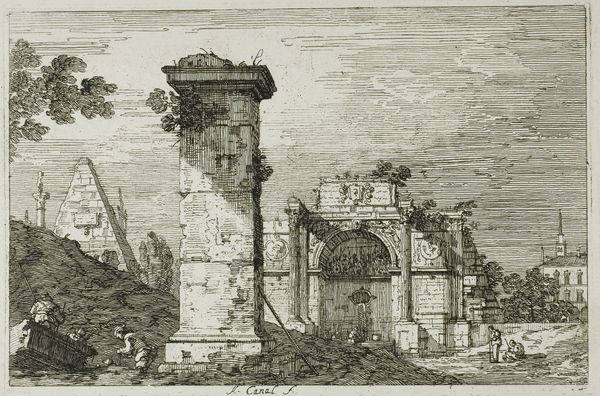
drawing, print, etching, paper, pencil, engraving
#
drawing
#
baroque
#
dutch-golden-age
# print
#
etching
#
pencil sketch
#
old engraving style
#
landscape
#
paper
#
pen-ink sketch
#
pencil
#
engraving
Dimensions: height 173 mm, width 135 mm
Copyright: Rijks Museum: Open Domain
Editor: This etching, "Ruin of the Huis ter Kleef in Haarlem" by Jacobus Schijnvoet, likely created sometime between 1711 and 1774, depicts the crumbling remains of a building. It’s stark, almost melancholic. What strikes you most about this piece? Curator: The romanticization of ruins was a common trope, particularly during periods of upheaval. But beyond a simple aesthetic appreciation, consider the power dynamics embedded in depicting decay. Who gets to define what constitutes "ruin," and whose narratives are being erased in the process? Is this just a landscape, or a commentary on power, loss, and historical memory? Editor: That's a much deeper read than I initially considered. The people in the foreground seemed like just compositional elements, adding to the perspective... Curator: Observe their scale relative to the ruin. They're dwarfed by it. Perhaps they’re positioned as spectators or survivors within a larger history. The Huis ter Kleef was a significant location – a former castle, which experienced periods of abandonment and military action. Think about how representing it in ruins connects to broader sociopolitical anxieties or a changing cultural identity in Haarlem at the time. Editor: So, you’re saying the ruin isn’t just a picturesque subject but a symbol loaded with meanings about history and society. Curator: Exactly. Consider the potential Dutch Golden Age context with its legacy of colonialism. Whose wealth erected these now-crumbling structures? Who profited, and who suffered? What does this ruin symbolize within a society wrestling with its past? Editor: This reframes the whole image. I had never thought of landscape art carrying so many social and political layers. Thanks! Curator: Indeed! Art offers a visual platform for dialogue. It allows us to excavate deeper meanings and connect seemingly distant historical narratives with our contemporary moment.
Comments
No comments
Be the first to comment and join the conversation on the ultimate creative platform.
